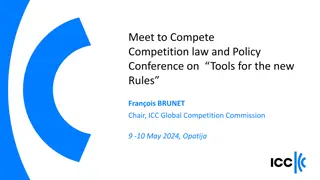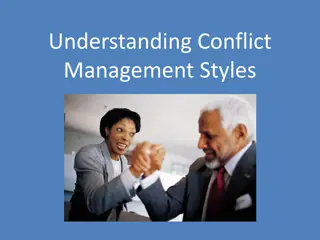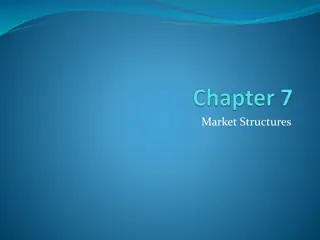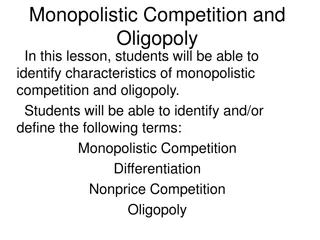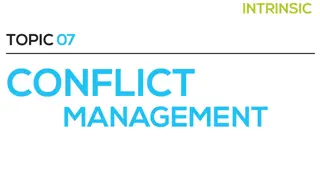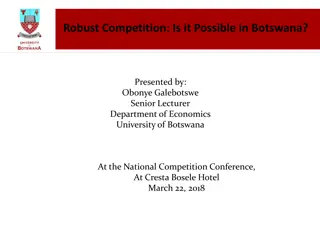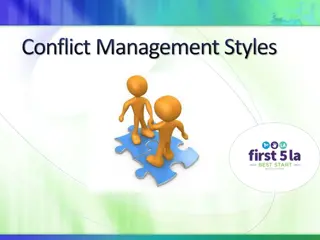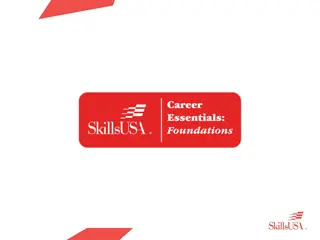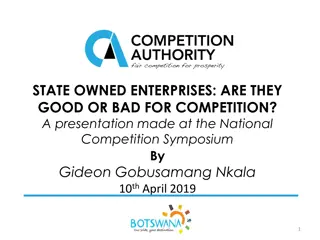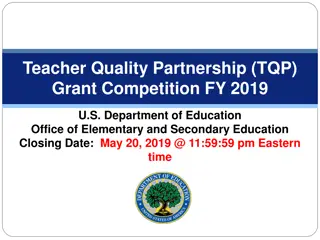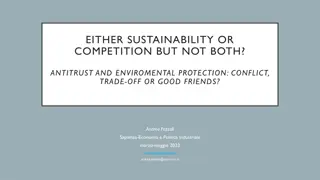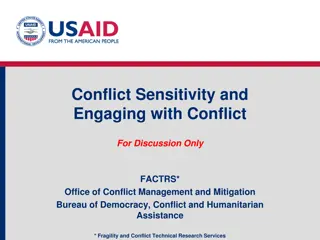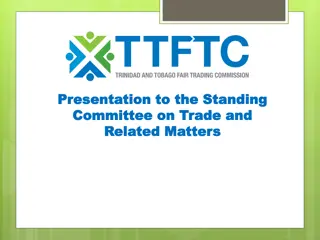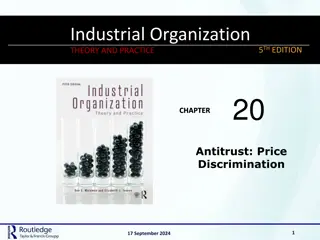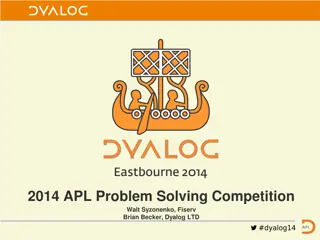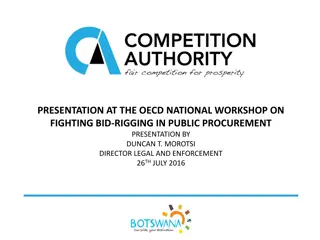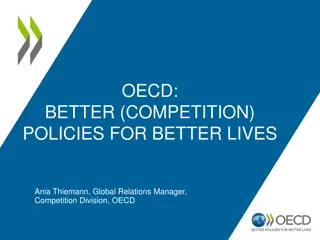Global Competition and Conflict Analysis Report 2014-2019
Comparative analysis report on global competition and conflict dynamics, focusing on key actors (China, Russia, Iran, Venezuela) and their strategies in economic, informational, and cultural domains. The report highlights tensions, vulnerabilities, and capabilities of these nations in shaping the future global order. Insightful findings on diplomatic, military, and economic developments during the period from June 1, 2014, to June 1, 2019, point towards emerging challenges and opportunities in the shifting global landscape.
Download Presentation

Please find below an Image/Link to download the presentation.
The content on the website is provided AS IS for your information and personal use only. It may not be sold, licensed, or shared on other websites without obtaining consent from the author.If you encounter any issues during the download, it is possible that the publisher has removed the file from their server.
You are allowed to download the files provided on this website for personal or commercial use, subject to the condition that they are used lawfully. All files are the property of their respective owners.
The content on the website is provided AS IS for your information and personal use only. It may not be sold, licensed, or shared on other websites without obtaining consent from the author.
E N D
Presentation Transcript
The Future of Global Competition & Conflict The Future of Global Competition & Conflict Final Report: Comparative Analysis Final Report: Comparative Analysis Media Ecology & Strategic Analysis (MESA) Group
Overview Overview Perceptions of World Order, US, EU, national leadership Allies and Competitors Conflict Management Method: Countries Analyzed Time Frame: June 1, 2014 June 1 2019 Articles Collected: 620 articles from China, Russia, Iran, Venezuela Search Terms: Mentions of global competition, global order, global influence Data Analysis: 1) Quantitative content analysis; 2) Qualitative narrative analysis China Russia Iran Venezuela Diplomatic Instruments of Power Economic Information Reflects a nation s social, cultural, and economic interests and beliefs about their political environment. Media: Ties in past experiences to make sense of the present while providing a vision for the future. Narratives: Military Primary Takeaways: FGC is battle for economic security (technological innovation, trade agreements). US actions leading to leadership vacuum; growing uncertainty. Development of informational and cultural strategies to mitigate US/Western influence.
Tensions & Competition in a Shifting Global Tensions & Competition in a Shifting Global Landscape Landscape Media and threats. causing diplomatic scramble. Military and Gray Global Economic MarketMarket access critical Fracturing of global market into smaller trade blocs causing disruption. ZoneTechnologically advanced warfare allows for measured responses yet risks miscalculations amid complexity InformationUS media dominance Threats to regional influence Global realignments of power and rising nationalistic concerns Diplomatic Ties concern. significant concern. Cultural and Identity China Russia Iran Venezuela FGC centered on trade and technological development China viewed as Global Leader (Optimistic) Threats: Isolationism, nationalism Solution: Globalism and support for WTO, UN Russia in conflict with West Concerns of Russian economic decline, lack of technological competitiveness Threats: Western information warfare and cultural encroachment Solution: Russian led counterbalance to West; investment in culture Iran as regional power; leader of Shia crescent US leveraging IC against Iran; US abuse of international norms Threats: US diplomatic and economic attempts to isolate Solution: greater regional unity in Shia Crescent; appeal to EU to balance against US Ideological battle between imperialists and developing countries Venezuelan weaknesses across all domains Threats: Foreign encroachment (economic, military); diplomatic isolation; economic trade relations Solution: Need for new policies; increase diplomatic engagement, develop new trade partnerships
Sentiment of Global Order and Actors Instruments of Power 0.8 Vulnerabilities Venezuela 0.6 Capabilities 0.4 Vulnerabilities 0.2 Iran Capabilities 0 China Russia Iran Venezuela Vulnerabilities Russia -0.2 Capabilities -0.4 Vulnerabilities China -0.6 Capabilities -0.8 0 20 40 60 80 100 120 140 -1 Role in Global Order Valence towards Global Order Valence towards US Valence towards WE D I M E Statistical modeling on media narratives revealed concerns for informational and cultural vulnerabilities and demonstrated the importance of maximizing economic and diplomatic capabilities. China was the only nation to view the FGO positively, largely due to its projection of itself as a rising power within the global order with the economic and technological ability to succeed in future global competition. All of the nations shared in having an exceptionally negative perspective on the US and its role within the global order.
Statistical Modeling Statistical Modeling FGO more positive as mentions of diplomatic and economic capabilities increased, and mentions of diplomatic vulnerabilities and competitors decreased. Positive perspective of nation s role in GO linked to increase discussions addressing informational vulnerabilities and articulating the necessary military capabilities of the nation. Increases Linked with Positive Perspective of Nation s role in GO Diplomatic capabilities Economic capabilities Discussions on informational vulnerabilities Articulation of military capabilities Decreases Diplomatic vulnerabilities Competitors Perspectives of WE more positive with discussions of alliances and inclusion of foreign sources were present within news stories. Increases in perceptions of US The US is viewed more positively as discussions of competitors and conflict management decrease. Linked with Positive Perspective of WE Discussions of alliances Inclusion of foreign sources Decrease mentioning of Competitors Conflict management
Implications for US Security Implications for US Security Potential Challenges to the US US competitors express rising insecurity within the international system threatening greater destabilization. While US pressure appears to be weakening Russian and Iranian abilities to compete globally, the US must ensure it maintains the diplomatic support of its allies. Russia appears committed to developing alternative diplomatic and economic partnerships with Eurasia and China. Views of the US as in decline jeopardizes future US influence. The US should consider developing a strategy highlighting its diplomatic and global leadership potential, especially in areas such as technological innovation. Potential Openings for the US US competitors appear vulnerable to US leadership regarding multilateral economic and diplomatic partnerships. Such partnerships, especially with Western European countries, are force multipliers when dealing with Iran, China, and Venezuela. US offering of economic pacts and technology sharing could be powerful inducements for Chinese and Venezuelan cooperation. US-China cooperation on economic and diplomatic issues can help support US influence. US media and information dominance is a significant advantage and a concern for Russia and Iran specifically. Cultural encroachment and the ability for the US to set the parameters of, and narratives on, international events via media are weapons of global competition that are acknowledged vulnerabilities by Russia and Iran.



